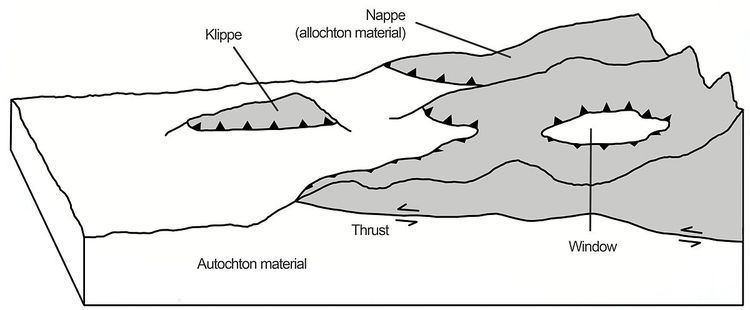 | ||
A tectonic window (or Fenster (lit. "window" in German)) is a geologic structure formed by erosion or normal faulting on a thrust system. In such a system the rock mass (hanging wall block) that has been transported by movement along the thrust is called a nappe. When erosion or normal faulting produces a hole in the nappe where the underlying autochthonous (i.e. un-transported) rocks crop out this is called a window. Klippen are also a feature near windows. The klippe is the remnant portion of a nappe after erosion has removed connecting portions of the nappe. This process results in an outlier of exotic, often nearly horizontally translated strata overlying autochthonous strata. Windows can be almost any size, from a couple of metres to hundreds of kilometres.
